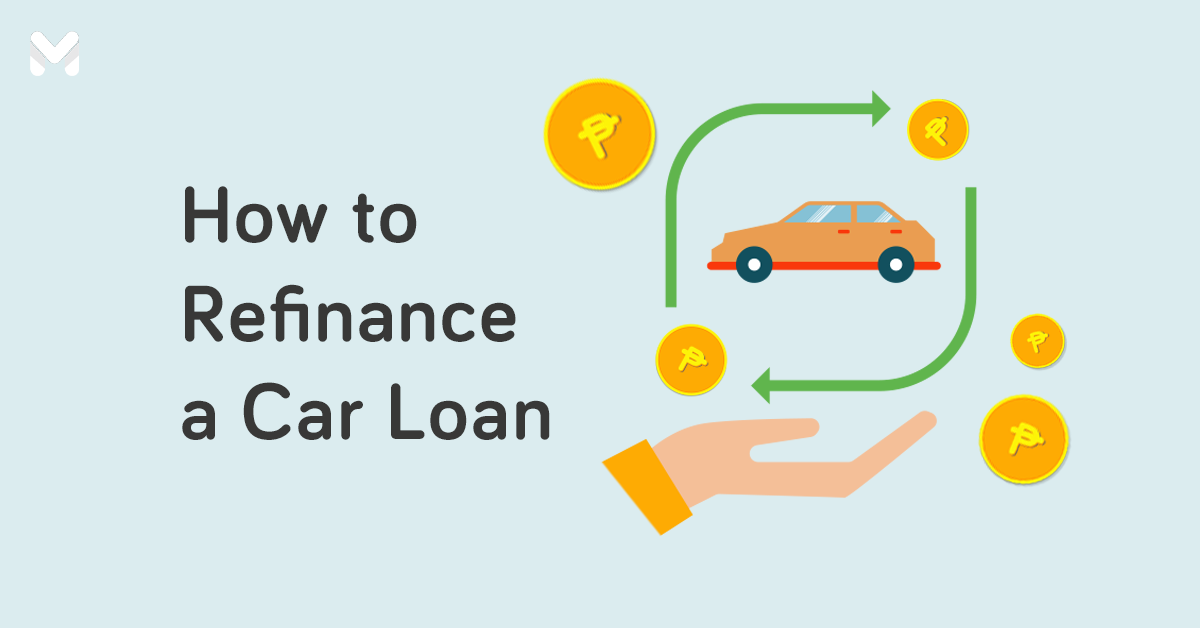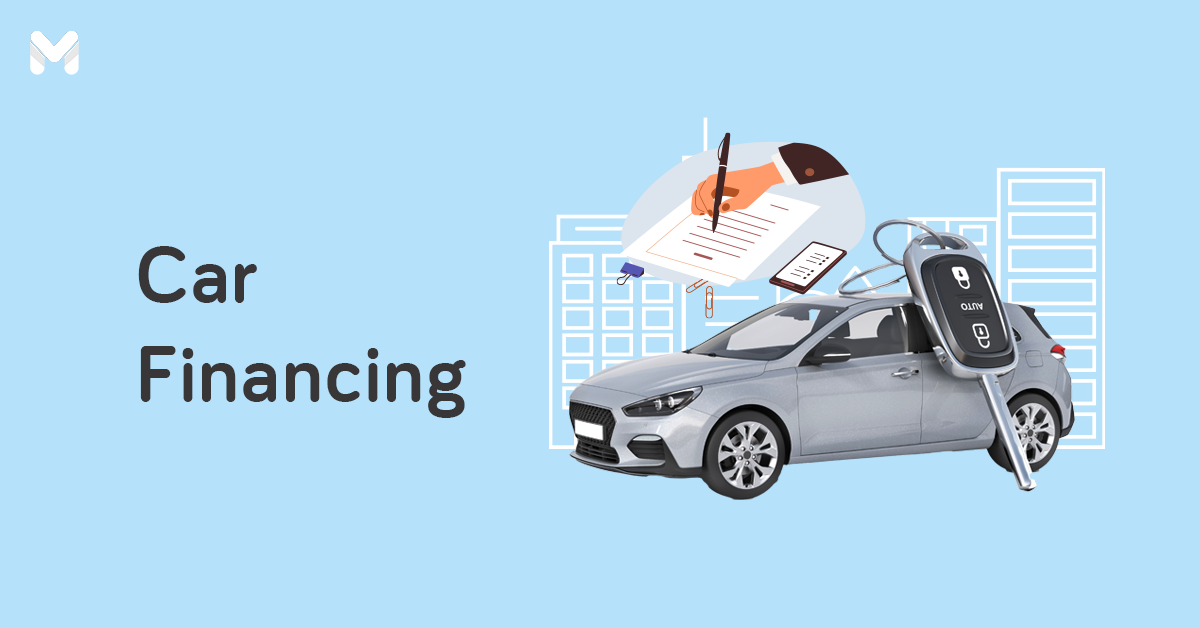So you've finished paying the monthly amortizations for your car loan. Congratulations!
You're probably wondering what to do after you've fully paid your car loan. You might think that the vehicle is now yours, but technically, the bank that provided the loan still owns the unit.
You have to do several things so you can finally become the car's true owner.
What to do After a Fully Paid Car Loan in the Philippines

Step 1: Confirm Availability of Your Collateral Documents
Around 10 to 15 banking days after your final car loan payment, the bank will notify you about the availability of your original collateral documents for release. If you don't hear from the bank after that period, call its customer service hotline to confirm your full payment and clarify when the documents will be ready for pickup.
Before claiming your documents from the bank, check if your car registration is valid and updated. Make sure you have no pending penalties—otherwise, the bank won't release the documents.
Read more: Own Your Dream Car: 15 Best Banks for a Car Loan in the Philippines
Step 2: Claim Your Collateral Documents from the Bank
-Jun-04-2024-03-58-51-6646-AM.png?width=600&height=400&name=Pics%20for%20blog%20-%20600x400%20(1)-Jun-04-2024-03-58-51-6646-AM.png)
Go to the branch where your car loan account was booked and present a valid ID to claim the following documents:
- Two copies of Release of Chattel Mortgage
- Promissory Note with Chattel Mortgage
- Original LTO Certificate of Registration - Encumbered (CRE)
- Official Receipt (OR)
If you purchased the car in Metro Manila, you can visit the head office of the bank that financed your car. If you're in the province, request the bank to send your documents to your preferred branch. You may be asked to fill out a request form and submit it to any branch or via email together with your valid ID.
All the registered owners whose names appear on the collateral documents must personally claim them. If a registered owner can't do it, a representative may pick up the documents on that person's behalf. Authorized representatives must present the following documents to the bank:
- Borrower's valid ID
- Representative's valid ID
- Original and signed authorization letter or special power of attorney (SPA)
Related:
- Car Loan Restructure in the Philippines: Why You Should Apply for One and How to Do It
- How to Refinance a Car Loan to Get Better Loan Terms
Step 3: Get Your Chattel Mortgage Cancelled at the Registry of Deeds
-Jun-04-2024-04-55-56-8815-AM.png?width=600&height=400&name=Pics%20for%20blog%20-%20600x400%20(3)-Jun-04-2024-04-55-56-8815-AM.png)
Go to the Registry of Deeds office where your car loan was registered for the cancellation of chattel mortgage. You can find the location of the Registry of Deeds on the Promissory Note with Chattel Mortgage. Typically, this office is located in the city or municipal hall or the Land Registration Authority office.
📋 Requirements for Cancellation of Chattel Mortgage at the Registry of Deeds
- Accomplished registration application form[1]
- Photocopy of your valid ID
- All collateral documents issued by the bank
Note that you don't need to bring your car to the Registry of Deeds.
Submit your requirements, then proceed to the cashier and pay the fee, which will depend on the mortgaged amount. Processing times for the cancellation of chattel mortgage vary with every city and municipality. Some take just hours, while others will advise you to return after one to three days.
Once it's ready, you'll receive a copy of the Release of Chattel Mortgage with a "Cancelled" stamp by the Registry of Deeds, the official receipt of payment for the cancellation, and the promissory note.
🛍️ Fund Big Purchases, Celebrations, and Milestones with an #UNOnow Loan
Buying gadgets, tools, and equipment for work or business? Gearing up for life milestones such as a wedding or a baby? Looking for ways to fund your child's tuition fees?
If you want both convenience and high loan amounts, check out what UNO Digital Bank has to offer. With an #UNOnow Loan, you can borrow funds starting at ₱10,000 up to ₱500,000 with a monthly interest rate of 2%. You can pay it back in six, 12, 18, 24, or 36 monthly installments.
Apply for an UNONow Loan via Moneymax now!
Step 4: Go to the LTO for Cancellation of Encumbrance
At this point, your car registration still bears an "encumbered" status. What's the meaning of an encumbered CR? It means it's under a financial obligation—i.e., a car loan.
So how to remove "encumbered" in your CR? To remove this status, visit the LTO branch that issued your original Certificate of Registration – Encumbered (CRE). You can find the particular LTO branch at the top portion of the document.
📋 Requirements for Cancellation of Mortgage at the LTO
Prepare the following documents before you go to the LTO office for the removal of encumbrance from your vehicle registration:
- Original Certificate of Registration with Encumbrance
- Latest Official Receipt of Motor Vehicle User's Charge (MVUC) and other fee payment
- Release of Chattel Mortgage duly annotated by the Registry of Deeds
- Official Receipt issued by the Registry of Deeds
- Accomplished Motor Vehicle Inspection Report (MVIR)[2]
Here's the process of removing your "encumbered" status at the LTO:
- Proceed to the counter for cancellation of encumbrance and submit the requirements to the evaluator.
- Wait for your name to be called. Proceed to the cashier to pay the fees. You'll be issued an official receipt after making the payment.
- LTO processes applications in an hour or two. When your name is called, go to the Releasing counter to receive your new Certificate of Registration (without the encumbrance), license plate, stickers, and other requested documents.
LTO's cancellation of encumbrance fee costs around ₱280 to ₱350. To save money on LTO fees, file for your cancellation of mortgage during your next LTO car registration renewal.
Step 5: Renew Your Car Insurance Policy
-Jun-04-2024-04-49-12-9824-AM.png?width=600&height=400&name=Pics%20for%20blog%20-%20600x400%20(2)-Jun-04-2024-04-49-12-9824-AM.png)
Once you have the LTO Certificate of Registration without the "Encumbered" status, the car is officially yours. Congratulations!
Before you throw a party to celebrate this milestone, don't forget to renew your car insurance policy. Now that you're the legitimate owner of the car, keep it insured to get financial protection against accidents.
If you purchased insurance through the bank that financed your car but want to consider other options, get free quotes from several providers through Moneymax:
| Car Insurance Company | Maximum Total Sum Insured | CTPL Coverage | Own Damage & Theft Coverage | Acts of Nature Coverage | Death / Disablement Coverage |
|
FPG Insurance
|
₱4 million
|
✔️
|
✔️
|
✔️
|
|
|
Malayan Insurance
|
₱7.5 million
|
✔️
|
✔️
|
✔️
|
|
|
The Mercantile Insurance Corporation
|
₱5 million
|
✔️
|
✔️
|
||
|
OONA Insurance (formerly MAPFRE)
 |
₱5 million
|
✔️
|
✔️
|
✔️
|
✔️
|
|
PGA Insurance
 |
₱3 million
|
✔️
|
|||
|
SGI Philippines
|
₱5 million
|
✔️
|
✔️
|
✔️
|
|
|
Standard Insurance
|
₱5 million
|
✔️
|
✔️
|
✔️
|
✔️
|
|
Stronghold Insurance
|
₱3 million
|
✔️
|
Final Thoughts
Now you know what to do after you've fully paid your car loan!
Your new unencumbered LTO Certificate of Registration is proof that you own the vehicle. Photocopy this document and keep it in a safe place. You might need it one day should you decide to sell your car.
Sources:
- [1] Registration Application Form (LRA)
- [2] Motor Vehicle Inspection Report (LTFRB)







_1200x350.png?width=734&height=214&name=UNOBank_Loan_Generic_Ad_(Apr_2024)_1200x350.png)



